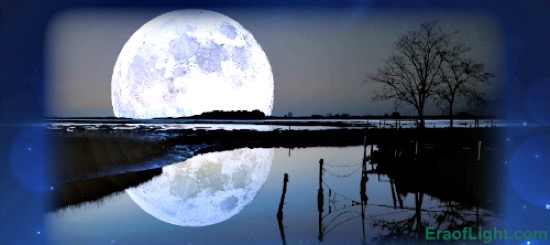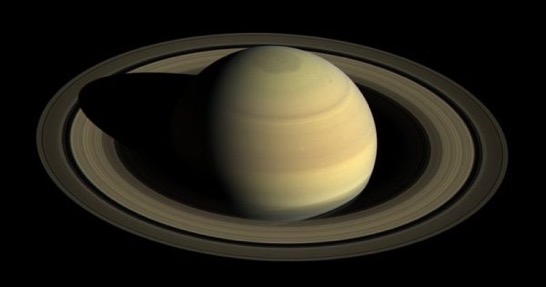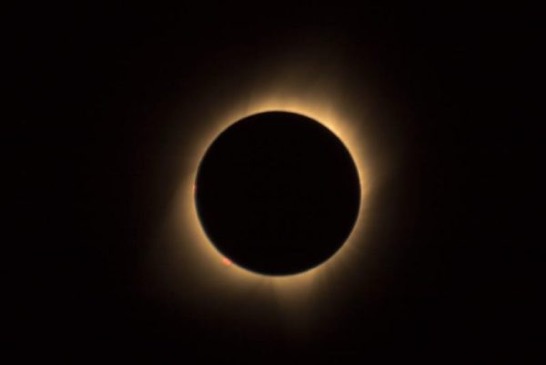The Moon Isn’t What You Think It Is – Bigger, Older & Lighter In Mass Than It Should Be
09.02.2020 16:52 Galactic History

Each night the moon makes its majestic appearance. Without this luminous sphere, our planet would be a vastly different place. It is responsible for the ocean’s tides, seasons, temperatures and Earth’s very rotation. Both humans and animals are affected by the lunar presence.
Scientists have theories about the planetary object’s origins yet all remain mere speculation. Some researchers disagree with current hypotheses and have proposed an intriguing conclusion. They argue the moon is an artificial satellite placed into orbit by advanced extraterrestrials.
“The Moon is bigger than it should be, apparently older than it should be and much lighter in mass than it should be. It occupies an unlikely orbit and is so extraordinary that all existing explanations for its presence are fraught with difficulties and none of them could be considered remotely watertight.” — Alan Butler, Who Built the Moon?

Lunar Lore Throughout History
While the notion that the moon is a synthetic celestial body may seem unimaginable, it has been discussed for thousands of years.
Our ancient ancestors who had no contact with one another all shared matching stories about a “time before the moon”. Greek philosophers Aristotle and Plutarch referenced an age where the astronomical glowing orb did not exist.
In Africa, Zulu legends chronicle how the planetoid was similar to an egg with its yoke removed. Tribespeople believed this hollowed heavenly lantern was brought here by advanced alien beings. Indigenous Colombians also recounted a pre-lunar civilization in their writings.
These diverse groups lament that when the transcendental shining ball arrived a terrible cataclysm unfolded, nearly eradicating humanity entirely. Earth’s population was supposedly reduced to a single race.
Modern science has ascertained that human beings share one common ancestor: Mitochondrial Eve. Might it be plausible ancient fables may be in fact be knowledge of events long forgotten?
Rang Like a Bell & Strange Sounds Emitting
Prior to mankind’s historic cosmic ventures, Apollo 10 traveled to the dark side of the moon. During radio transcripts, the astronauts speak of hearing “eerie outer space music”.
Bizarre electromagnetic tones similar to the frequencies recorded inside Saturn’s rings were clearly audible. A dreadful otherworldly orchestra encompassed the ears of every voyaging passenger. NASA affiliates quickly dismissed the acoustic oddity and blamed radio waves interfering with the satellite’s magnetic field.
However, their argument is not applicable as the planetary body does not possess a magnetic field.
Apollo 12 infamously landed on the moon in November of 1969 and its force produced an artificial earthquake. Seismic devices registered the impact which covered a forty-mile range.
Astonishingly, the object rang like a bell for over thirty-five minutes. Officials from NASA were greatly intrigued by this auditory phenomenon. On the following mission, executive personnel decided to send a heavier rocket and document the results.
Apollo 13 was deployed and its module struck with the equivalence of eleven tons of TNT. For three hours, the planetoid reverberated with sounds similar to a massive gong. Such noises would be physically impossible for a solid mass to produce.

Identical Crater Depths & Unnatural Metallurgic Composition
Earth’s ever-revolving companion is laden with millions of craters in varying diameters. Size and force of impact dictate how large or small the cavity will be. With such a broad range in breadth, one would expect to see varying depths.
Perplexingly, all holes measure an identical distance downwards at precisely four feet. It’s as if a protective metallic barrier is shielding the globe’s interior.
Another chilling factor is the moon’s chemical composition. Cosmonauts attempted to drill into several craters but could barely penetrate the surface. After multiple failed boring attempts, metallurgists performed extensive tests to lunar materials.
These results led to a startling conclusion: the elements were not naturally occurring. Brass, titanium and micah comprise the celestial sphere — compounds often utilized in architectural design.

Structures on the Surface
On November 23, 1966 a manned orbiter took photographs of the lunar surface. Shockingly, six enormous megalithic structures were captured on the film. It was a groundbreaking discovery which made the front page of newspapers including LA Times and Washington Post. The monoliths appeared incredible in their geometric precision and could not be formed naturally.
Analysis performed by NASA researchers estimated the towers could be taller than skyscrapers found on Earth. Russian space engineer, Alexander Abramov, studied these perplexing images and noted the spire’s arrangement accurately matched Egypt’s Great Pyramids.
NASA claimed these architectural anomalies were merely an optical illusion and publicly declined further investigation. Nevertheless, years later, Apollo 17 again obtained shots of these peculiar right-angled constructs.
For decades, poor quality images of the glowing crater-laden sputnik mainly circulated. Things changed in 1994 after Jose Escamilla colorized black and white photos acquired from an orbiter. With this alteration, previously indecipherable details became apparent. Through his minor edit, several colossal formations became distinctly visible.
Moon’s Light Mass
A particularly puzzling aspect of the strange space rock is its incredibly light volume. Although the satellite is a quarter of Earth’s eight thousand mile diameter, it only has 1.2% of the mass. Four moons should theoretically be equivalent to one Earth.
In reality, it would take over eighty-one moons to produce our terrestrial world’s total mass. Two Russian scientists, Mikhail Vasin and Alexander Shcherbakov, found this fact more than unsettling.
In 1970 they risked their entire careers after publishing an article in Sputnik Magazine titled “Is the Moon the Creation of Alien Intelligence?” After years of examination, the men concluded that the moon was placed in orbit eons ago by sentient beings currently unknown to society.
In their writings, they state:
“If higher life only developed on Earth because the Moon is exactly what it is, and where it is, it becomes irrational to cling to the idea that it is a natural object.”
Mathematical Components
Examining the geometrical and mathematical aspects of the Moon, Sun and Earth brings forward incredibly startling revelations. Consequently, the numbers are so eerily precise that one begins to ponder: might it all occur by grand design as oppose to mere coincidence?
For example, the sun is 400 times larger than the moon’s diameter and 400 times further to Earth. For this reason, both bright heavenly spheres appear perfectly equal in size. Without this phenomenal anomaly, lunar and solar eclipses would be unattainable. Our planet rotates 366 times when orbiting the Sun while the Sun is 366% of the Moon’s polar circumferences.
In 10,000 days, the Moon orbits Earth 366 times. The Moon’s perimeter totals 1,0920 kilometers and there are 109.2 Earth diameters across the Sun. When the planet is furthest from the Sun, there are 109.2 Sun diameters between our world and the fiery star.
The Moon’s polar circumference is 27.3% the size of Earth’s polar circumference. Every 27.3 days the Moon will orbit Earth and travel 1,092 kilometers at the equator every 27.3 days.

Somber Demeanor of Astronauts
Landing on the moon was one of humanity’s most triumphant accomplishments. You would imagine that being the first men setting foot there would be a celebratory achievement. Yet when the astronauts returned to Earth, their demeanors were incredibly somber. During an interview, the group seemed uncomfortably tense. Each man is oddly hesitant and visibly uncomfortable.
Some hypothesize it is because their entire worldview had just been drastically turned upside down. During Apollo’s first mission there are two minutes where the camera and radio feed disappear completely. Neil Armstrong switched to the medical channel and exclaimed: “they’re here… they’re parked on the side of the crater. They’re watching us.”
If you would like to learn more about this synthetic satellite, check out ‘Who Built the Moon?’ by Christopher Knight and Alan Butler.
Source: DownTheChupacabraHole.com — Make sure to follow their Facebook page here.
Source
